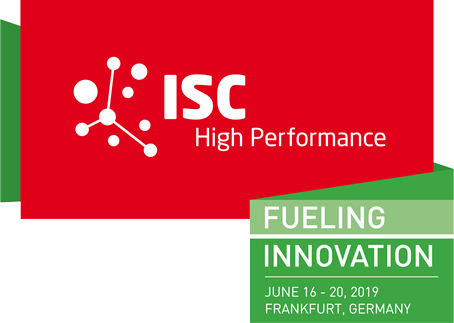Presentation
(PP27): SPH-EXA: Optimizing Smoothed Particle Hydrodynamics for Exascale Computing
SessionProject Poster Presentation
Event Type
Project Poster


MPI
Parallel Applications
Performance Analysis and Optimization
Resiliency
Scheduling
TimeTuesday, June 18th3:15pm - 3:45pm
LocationBooth N-230
DescriptionThe SPH-EXA project, funded by the Swiss Platform for Advanced Scientific Computing, brings together expertise in High Performance Computing, Astrophysics, and Computational Fluid Dynamics.
The Smoothed Particle Hydrodynamics (SPH) technique is a purely Lagrangian method, used in numerical simulations of fluids in astrophysics and computational fluid dynamics, among many other fields. SPH simulations are among the most computationally-demanding calculations, in terms of sustained floating-point operations per second, or FLOP/s. It is expected that these numerical simulations will significantly benefit from the future Exascale computing infrastructures, that will perform 1018 FLOP/s.
The performance of the SPH codes is, in general, adversely impacted by several factors, such as multiple time-stepping, long-range interactions, and/or boundary conditions.
SPHYNX, ChaNGa, and SPH-flow, three SPH implementations, are the starting point of an interdisciplinary co-design project, SPH-EXA, for the development of an Exascale-ready SPH mini-app. The goal is to understand the scalability limitations of state-of-the-art SPH implementations and use such knowledge to create an Exascale-ready SPH mini-app.
An extensive study of SPHYNX, ChaNGa, and SPH-flow has been performed, to gain insights and to expose the characteristics and any limitations of the codes. Such exposed limitations have been solved in the parent codes and shape the design and implementation of the SPH-EXA mini-app towards the use of efficient parallelization methods, fault-tolerance mechanisms, and load balancing approaches, to sustain the scalable execution of massively parallel SPH codes. The SPH-EXA mini-app development targets reproducibility and portability by using continuous integration systems, and containerization techniques.
The Smoothed Particle Hydrodynamics (SPH) technique is a purely Lagrangian method, used in numerical simulations of fluids in astrophysics and computational fluid dynamics, among many other fields. SPH simulations are among the most computationally-demanding calculations, in terms of sustained floating-point operations per second, or FLOP/s. It is expected that these numerical simulations will significantly benefit from the future Exascale computing infrastructures, that will perform 1018 FLOP/s.
The performance of the SPH codes is, in general, adversely impacted by several factors, such as multiple time-stepping, long-range interactions, and/or boundary conditions.
SPHYNX, ChaNGa, and SPH-flow, three SPH implementations, are the starting point of an interdisciplinary co-design project, SPH-EXA, for the development of an Exascale-ready SPH mini-app. The goal is to understand the scalability limitations of state-of-the-art SPH implementations and use such knowledge to create an Exascale-ready SPH mini-app.
An extensive study of SPHYNX, ChaNGa, and SPH-flow has been performed, to gain insights and to expose the characteristics and any limitations of the codes. Such exposed limitations have been solved in the parent codes and shape the design and implementation of the SPH-EXA mini-app towards the use of efficient parallelization methods, fault-tolerance mechanisms, and load balancing approaches, to sustain the scalable execution of massively parallel SPH codes. The SPH-EXA mini-app development targets reproducibility and portability by using continuous integration systems, and containerization techniques.
Poster PDF


